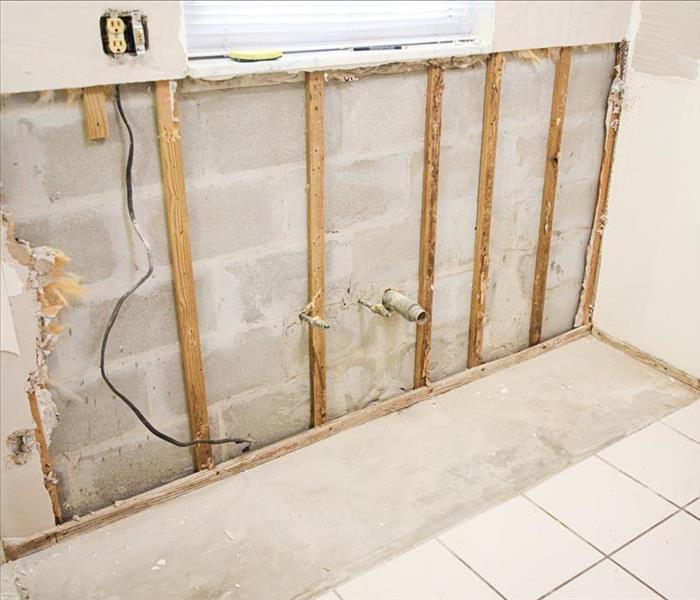8 Tips for Tearing Out Flood Damage
8/19/2021 (Permalink)
Tearing out damaged items after flooding in your home can be one of the most time and labor-intensive parts of the restoration process.
These tips will help you complete it correctly.
1. Take Precautions
The tear-out process may expose you to mold, dust, mildew, sharp items, nails, broken glass, and other debris. Wear protective gear such as gloves, sturdy shoes, dust masks, and eye protection. It may be a good idea to get a Tetanus shot if you haven't had one in the past ten years.
2. Remove Wet Contents
Before you start tearing out materials, remove wet contents. Leaving items such as wet furniture, clothing, and books in the home can cause the drying process to take longer which increases the risk of mold growth and other complications. Some wet items can be placed outside to dry, though be cautious about leaving furniture and other items that may fade or discolor in the sunlight for too long.
3. Hire a Restoration Company To Remove Black Water
If there is still water in your home from outside flooding or a sewer backup, consider hiring a restoration company in West Valley City, UT, to remove it. Sewage and floodwaters may contain contamination that is unsafe to handle without the proper safety equipment and training.
4. Remove Water Damaged Flooring Other Than Tile
Tiles that have been installed on a concrete slab are usually not damaged by floodwater and can be restored by regrouting and resealing them. Most other types of flooring, including carpets, wood floors, and subfloors will need to be removed and replaced.
5. Remove the Baseboards
Depending on how high the water level was, your baseboards will either need to be removed and replaced or detached and reset. If you aren't sure, consult with a contractor. If you have insurance, you may want to talk to your insurance company about what it will pay for, before you decide what to do.
6. Make a Flood Cut
If your drywall got wet, remove it from the floor to one foot above the waterline. Once you have removed the drywall, remove the insulation up to the same point. Insulation that has gotten wet can not be salvaged. You should remove and replace it.
7. Detach Cabinets
If your cabinets are damaged or the drywall and insulation behind the cabinets are damaged, remove the cabinets. If the cabinets were damaged, they will need to be replaced. If only the walls were damaged, the cabinets can be reset. If the face frame and doors of your damaged cabinets are not damaged, you can remove them and attach them to your replacement cabinets so that they will match the rest of your cabinets.
8. Some Countertops Can Be Salvaged
Laminate countertops can often be detached and reset because they are attached to the base with screws. Tile countertops need to be replaced because they can not be removed in a single piece.
Restoring your home after flooding is a lengthy and work-intensive process. However, taking the time to properly tear out damaged materials before beginning the repair process can help you avoid future problems.





 24/7 Emergency Service
24/7 Emergency Service
